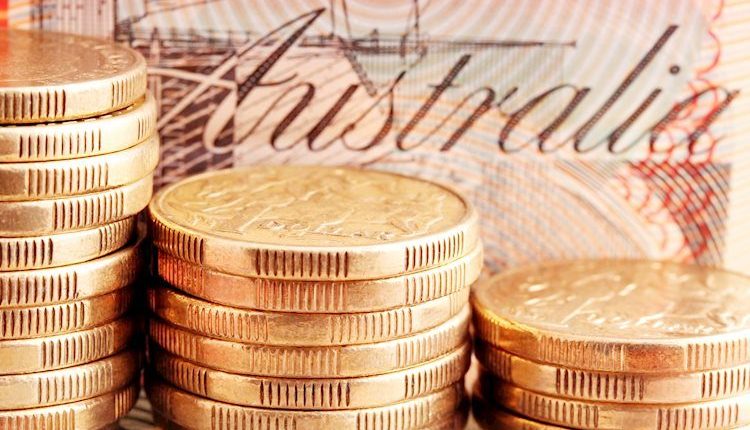- AUD/USD flat lines near 0.6185 in Thursday’s early Asian session.
- A slower pace of the Fed rate cut might lift the USD against the Aussie.
- A falling Chinese Yuan has led the Aussie to multi-year lows.
The AUD/USD pair trades on a flat note around 0.6185 during the early Asian session on Thursday. However, the expectation that the US Federal Reserve (Fed) will take a slow and cautious approach to further rate cuts this year might boost the US Dollar (USD) and acts as a headwind for AUD/USD.
In the final monetary policy meeting on December 18, the Fed indicated that it would only reduce interest rates two times next year, down from four rate cuts in September’s updated economic projections. The rising bets that the US central bank will hold interest rates higher than peers lift the Grenback to dominate rivals.
Furthermore, the rising geopolitical tensions in the Middle East and the ongoing Russia-Ukraine war could underpin the USD, a safe-haven currency, in the near term. “The greenback has been boosted by “rising growth concerns elsewhere against the background of geopolitical risk,” noted analysts at Action Economics.
The Australian Dollar (AUD) declined around 9.2% in 2024, the weakest yearly performance since 2018. On Tuesday, AUD/USD fell to a multi-year low, pressured by the weakening of the Chinese Yuan and a lack of confidence in the outlook for China’s economy. “The problem with the Australian dollar appears to be that there was a real wobble in the Chinese currency into New Year’s Eve,” said InTouch Capital Markets senior FX analyst Sean Callow.
Looking ahead, the Chinese Caixin Manufacturing Purchasing Managers Index (PMI) for December is due later on Thursday. Also, the US weekly Initial Jobless Claims and S&P Global Manufacturing PMI for December will be released.
Australian Dollar FAQs
One of the most significant factors for the Australian Dollar (AUD) is the level of interest rates set by the Reserve Bank of Australia (RBA). Because Australia is a resource-rich country another key driver is the price of its biggest export, Iron Ore. The health of the Chinese economy, its largest trading partner, is a factor, as well as inflation in Australia, its growth rate and Trade Balance. Market sentiment – whether investors are taking on more risky assets (risk-on) or seeking safe-havens (risk-off) – is also a factor, with risk-on positive for AUD.
The Reserve Bank of Australia (RBA) influences the Australian Dollar (AUD) by setting the level of interest rates that Australian banks can lend to each other. This influences the level of interest rates in the economy as a whole. The main goal of the RBA is to maintain a stable inflation rate of 2-3% by adjusting interest rates up or down. Relatively high interest rates compared to other major central banks support the AUD, and the opposite for relatively low. The RBA can also use quantitative easing and tightening to influence credit conditions, with the former AUD-negative and the latter AUD-positive.
China is Australia’s largest trading partner so the health of the Chinese economy is a major influence on the value of the Australian Dollar (AUD). When the Chinese economy is doing well it purchases more raw materials, goods and services from Australia, lifting demand for the AUD, and pushing up its value. The opposite is the case when the Chinese economy is not growing as fast as expected. Positive or negative surprises in Chinese growth data, therefore, often have a direct impact on the Australian Dollar and its pairs.
Iron Ore is Australia’s largest export, accounting for $118 billion a year according to data from 2021, with China as its primary destination. The price of Iron Ore, therefore, can be a driver of the Australian Dollar. Generally, if the price of Iron Ore rises, AUD also goes up, as aggregate demand for the currency increases. The opposite is the case if the price of Iron Ore falls. Higher Iron Ore prices also tend to result in a greater likelihood of a positive Trade Balance for Australia, which is also positive of the AUD.
The Trade Balance, which is the difference between what a country earns from its exports versus what it pays for its imports, is another factor that can influence the value of the Australian Dollar. If Australia produces highly sought after exports, then its currency will gain in value purely from the surplus demand created from foreign buyers seeking to purchase its exports versus what it spends to purchase imports. Therefore, a positive net Trade Balance strengthens the AUD, with the opposite effect if the Trade Balance is negative.
Read the full article here

